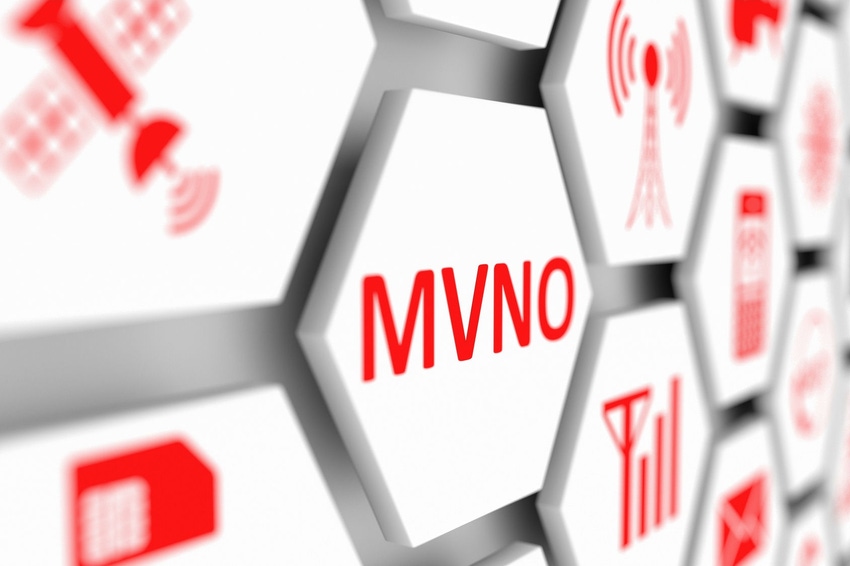Q&A with Algis Akstinas of dotmobile
Today, many telecoms face competitors with better technology and a better business model (the cost to experience ratio).
April 17, 2020

Telecoms.com periodically invites expert third parties to share their views on the industry’s most pressing issues. In this piece Algis Akstinas, CEO and Founder at dotmobile, sat down with the MVNOs Series to discuss digitalization in the MVNO space.
MVNOS: Is a 100% digital MVNO the answer to the growing competition between operators and digital apps?
Akstinas: I don’t think telecoms ever stood a chance to compete against the over the top communication OTT apps. They aren’t beating telecoms by chance. User experience and differentiated business models are the reasons why they are winning over users from traditional telco services. All of it is enabled by better service technology running on the existing physical networks, delivering new ways to communicate and breaking down traditional barriers to entry. They simply did it better over the internet, and they did it globally. Facetime wasn’t invented by a telecom company, and companies like WhatsApp, Skype, Zoom didn’t need the help of telecoms to grow their market share.
Today, many telecoms face competitors with better technology and a better business model (the cost to experience ratio). If that wasn’t apparent before, the current global crisis unearthed and accelerated the need for efficiency, for better digital experiences and online tools. The main threat for telecoms now is being too slow.
A well designed, fully digital MVNO can deliver better value and experience. It is also a way to provide a more accessible, efficient, and flexible wireless service. They will do it by operating their network as a service layer on top of the physical radio access network, ideally with their own, modern core network. Most of it will be in the cloud (for scalability, speed and innovation).
Now it is probably a good time for telecoms to forget the `old fight` against OTT that was lost long time ago and focus on the new one – the transformative impact the current global developments are having on the overall telecom service business (which is different from the physical network infrastructure management and investments).
What behaviours and actions traditional MVNOs must do to survive and stay relevant in the long run?
For a long time, traditional MVNOs relied on corners of the market that were analogous in nature. Top-up cards. Cash. People now expect better digital experiences, because they are used to it in other services. The pressure for better digital experiences will increase to anyone in the market.
The first step is investing digital resources in more than online ads – for example, develop better content marketing and build engaging connections with your community. Understand how to be visible on rate price comparison sites like whistleout.com and planhub.ca (just in Canada). Go beyond self-service portals and sell more online. Payment options, if a barrier at all, are verifiably solvable (mPesa mobile money, WeChat p2p and other services).
New ways to operate are emerging. The low-cost high-tech model in telecoms is a great way to differentiate in the emergence of a more tightly knit, shared, stakeholder economy.
What does a fully digital MVNO look like?
Built on secure and redundant, modern cloud technology it provides infinite scalability. Architected with microservices and modularity in mind it is capable of weaving in internal and external digital services and APIs. Powering modern digital services and experiences in an economical and enhanced way.
On the consumer or business side, it looks like just any other good digital service that you have tried recently. Join from your phone and start using the wireless service immediately, with just a few clicks (using eSIM or delivery to live location). Have full control of your experience, including a ‘leave button’, full privacy, data management, and cost controls. Your wireless service, different IOT/ connected devices are part of the larger ecosystem of things needed.
It also should feel much more pro-active and helpful, more in context. Using real-time and often crowdsourced data. Think member powered network traffic congestion predictions, recommendations and delivery arrival times. Ordering a new phone case, finding a phone repair service or using your phone screen insurance should be an extension of topping up your data bucket.
You are set to speak at MVNOs World Congress 2020. What excites you most about the event? Why are you attending? What do you hope to gain?
We are excited to share our perspective and learn from other approaches around the world. A truly game-changing network technology – 5G – will be transforming wireless (in the next 3-5 years in a meaningful way) and there is loads of potential on top of that for the service innovation using new digital technologies.
We are at the right moment in time to make both transformations. Plenty of encouragement from other industries as Fintech and plenty of public interest to drive a smarter type of investment into essential infrastructure.
We are ultimately a telecom technology company and a startup. Constantly looking for ways to grow: technology, innovation, distribution partnerships, investment and business development opportunities.
In exciting news, Algis will be speaking at MVNOs World Congress 2020 in September in Berlin. Find out more about the event here.
Read more about:
DiscussionAbout the Author(s)
You May Also Like








.png?width=300&auto=webp&quality=80&disable=upscale)


_1.jpg?width=300&auto=webp&quality=80&disable=upscale)


.png?width=800&auto=webp&quality=80&disable=upscale)